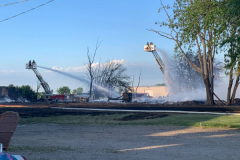From Crabby Milton:
I have some news about the Milwaukee Fire and Police expo that is usually held at MATC South. It’s not going to take place this year.
I was told in an email from the person at MATC who helps coordinates this event that because of COVID concerns along with the fact that it takes a year to plan it out that they will not have this expo, but perhaps it will return in ’22. It was always a great time. I had a feeling that it would not take place but thought I would check with them anyway just to be sure for planning purposes.

































